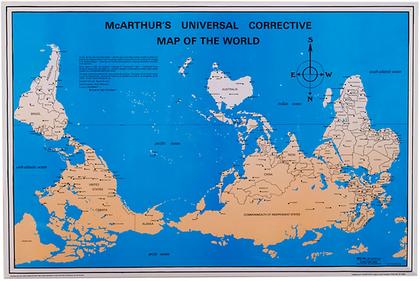|
|
 
|
|
Author
|
Topic: S-Video OUTPUT from SCART
|
|
|
|
|
|
|
|
|
|
|
|
|
Stephen Furley
Film God

Posts: 3059
From: Coulsdon, Croydon, England
Registered: May 2002
|
 posted 12-13-2004 01:04 PM
posted 12-13-2004 01:04 PM




Beginers guide to scart (also known as peritel, peritelevision, Euroconnector).
Scart was a good idea, but badly implemented. The connectors are badly designed, and most of them are quite horribly constructed, though there are some better quality ones around.
The idea was to provide a single cable to provide all audio and video connections between a signal source and a single monitor. They were desiged for domestic, not industrial, use, and provided composite video and two channel stereo audio input and output, mainly for connecting a video recorder to a receiver/monitor, allowing for recording and playback. Except for the stereo audio this was similar to the old EIAJ 8-pin connector often found on early U-Matic machines.
The pin connections used for this are:
Audio right out 1
Audio right in 2
Audio left out 3
Audio ground 4
Audio left in 6
Composite video out ground 17
Composite video in ground 18
Composite video out 19
Composite video in 20
The plug has 20 pins, but the socket has 21 contacts, the extra one connects to an outer metal shield on the plug.
These connections are the same on all scart connectors, therefore there have to be suitable crossovers in all cables on these pins.
At the time that the scart connector was designed, several home computers, such as the BBC micro, were outputing 625 line 50Hz interlaced video, and could do so in composite, or RGB, form. Mainly for this purpose, the scart connector was designed to optionally handle RGB signals. The extra pins used for this are:
Blue ground 5
Blue 7
Green ground 9
Green 11
Red ground 13
Red 15
A composite sync signal could be either on the green signal, or on what are nomally the composite video pins. Note that there are no separate 'in' and 'out' pins, due to the intended use these signals would be in one direction only, so these pins would be outputs on computers, and later on DVD players etc., and inputs on television receivers/monitors, therefore these pins are wired straight through on cables where they are wired at all. These signals are optional, not all equipment provides them, and not all cables have them connected. If a cable is wired for composite video only, these pins may be missing from the plugs, or the cable may be thinner, or you may just have to guess whether it is fully-wired or not. Most new cables are now fully-wired, but many older ones were not. Many televisions which have two scart connectors have only one of them fully-wired, Philips started making them blue and orange, but I could never remember which was which, and I don't think anyone else took up the idea.
For many years the RGB connections were very seldom used, computers moved away from 625 line 50Hz interlaced displays, and so needed proper computer monitors, and no other domestic equipment provided RGB signals. In recent times they have been much used by DVD players, and by digital television set-top boxes. They do enable older equipment, my 14 inch Sony television is about fifteen years old, to take advantage of high quality signals from DVDs etc. There is also another use for them; while most modern European televisions will accept NTSC, most older ones will not. However, almost of them will accept a 525/59.94 signal. By feeding them with RGB they can display NTSC (sic) DVDs. Quite a few 'specialised' (no, I didn't mean porn) discs sold here are in this format, and coded for all regions, things like documentaries, music discs, IMAX films, sport, that sort of thing.
Soon after scart was designed SVHS and Hi-8 equipment started using Y/C S-video signals, so the scart spec. was changed to allow Y on the composite video pins and C on pin 15, normally used for red, and only provided in one direction. Many later televisions have one scart wired for composite and RGB, and the other for composite and Y/C.
In recent times things like DVD recorders have been able to both record and play via RGB connections; I assume they do this by switching the pins from output to input depending on the mode they are in.
The scart also provides a couple of switching signals, originally one of these would switch a television from off-air reception to composite video input; typically a VCR would assert this signal when switched to play. The other signal would select RGB input. I cannot remember the pin numbers used. By using different Voltages on one of the pins the facility was added for switching between 4:3 and 16:9 mode. Most new television sets in Europe except the smallest sizes have been 16:9 for several years now. There are a few other signals, but they are seldom used.
The advantages of scart include:
Single cable.
Available on most equipment in Europe.
Automatic switching of television mode.
The disadvantages are:
Horrible connector.
Large connector.
Thick, stiff, bulky cable.
Not recommended for long cable lengths.
Specification of some of the pins changed somewhat over the years.
Difficulties in telling what signals equipment actually provides/accepts.
RGB signals in one direction only.
Switching signals not always interpreted correctly.
No provision for component (Y,Pr,Pb) signals.
No provision for Digital signals, at least not for audio/video use.
Not widely used outside Europe.
[ 12-13-2004, 02:26 PM: Message edited by: Stephen Furley ]
| IP: Logged
|
|
|
|
|
|
All times are Central (GMT -6:00)
|
|
Powered by Infopop Corporation
UBB.classicTM
6.3.1.2
The Film-Tech Forums are designed for various members related to the cinema industry to express their opinions, viewpoints and testimonials on various products, services and events based upon speculation, personal knowledge and factual information through use, therefore all views represented here allow no liability upon the publishers of this web site and the owners of said views assume no liability for any ill will resulting from these postings. The posts made here are for educational as well as entertainment purposes and as such anyone viewing this portion of the website must accept these views as statements of the author of that opinion
and agrees to release the authors from any and all liability.
|

 Home
Home
 Products
Products
 Store
Store
 Forum
Forum
 Warehouse
Warehouse
 Contact Us
Contact Us




 Printer-friendly view of this topic
Printer-friendly view of this topic





![[Confused]](confused.gif) S-Video output?????
S-Video output?????



![[Wink]](wink.gif)

![[Big Grin]](biggrin.gif)



![[Mad]](mad.gif)



